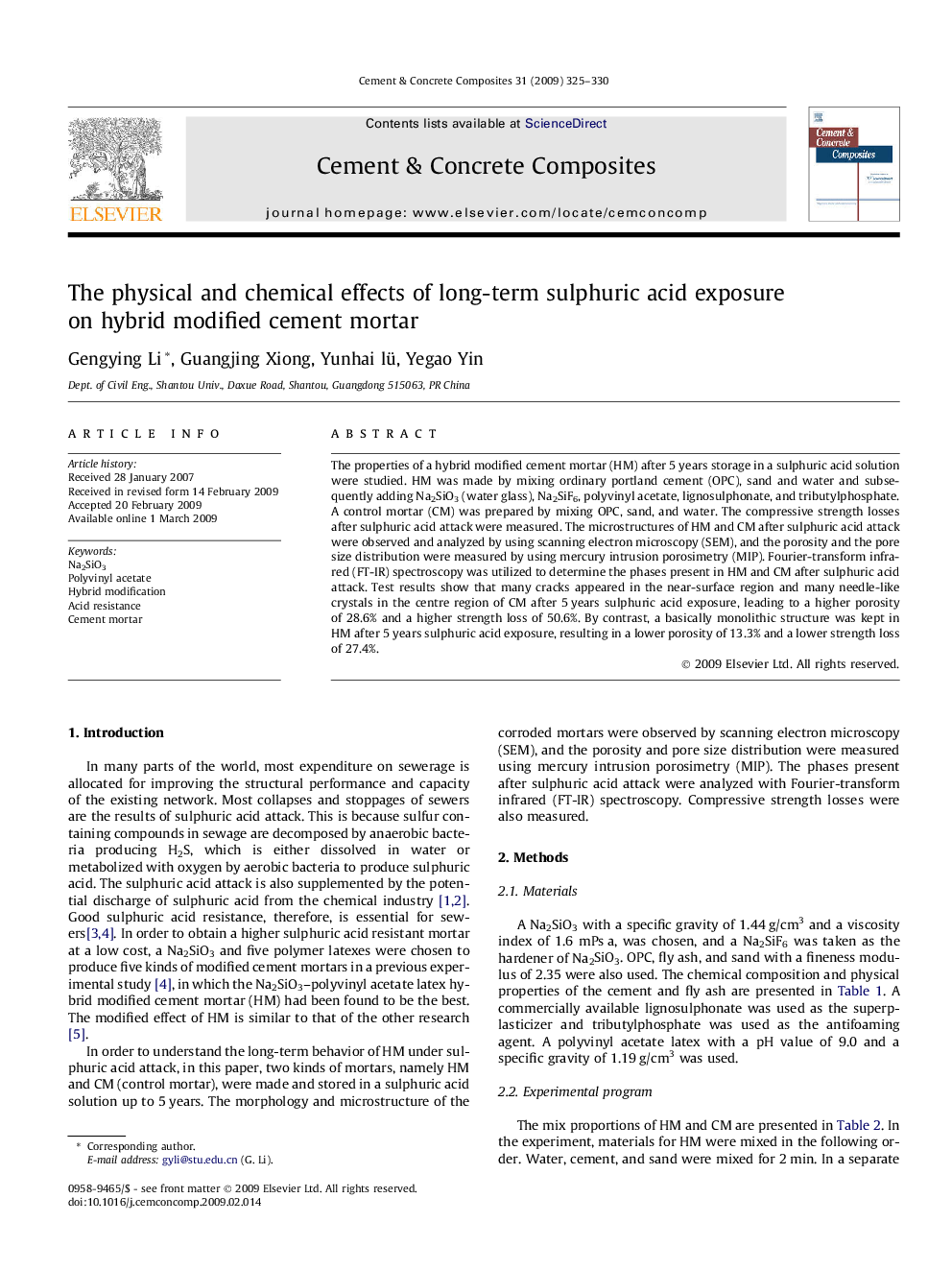| کد مقاله | کد نشریه | سال انتشار | مقاله انگلیسی | نسخه تمام متن |
|---|---|---|---|---|
| 1455380 | 989040 | 2009 | 6 صفحه PDF | دانلود رایگان |

The properties of a hybrid modified cement mortar (HM) after 5 years storage in a sulphuric acid solution were studied. HM was made by mixing ordinary portland cement (OPC), sand and water and subsequently adding Na2SiO3 (water glass), Na2SiF6, polyvinyl acetate, lignosulphonate, and tributylphosphate. A control mortar (CM) was prepared by mixing OPC, sand, and water. The compressive strength losses after sulphuric acid attack were measured. The microstructures of HM and CM after sulphuric acid attack were observed and analyzed by using scanning electron microscopy (SEM), and the porosity and the pore size distribution were measured by using mercury intrusion porosimetry (MIP). Fourier-transform infrared (FT-IR) spectroscopy was utilized to determine the phases present in HM and CM after sulphuric acid attack. Test results show that many cracks appeared in the near-surface region and many needle-like crystals in the centre region of CM after 5 years sulphuric acid exposure, leading to a higher porosity of 28.6% and a higher strength loss of 50.6%. By contrast, a basically monolithic structure was kept in HM after 5 years sulphuric acid exposure, resulting in a lower porosity of 13.3% and a lower strength loss of 27.4%.
Journal: Cement and Concrete Composites - Volume 31, Issue 5, May 2009, Pages 325–330